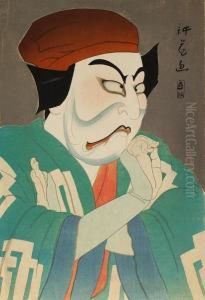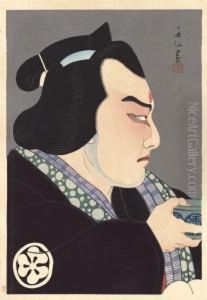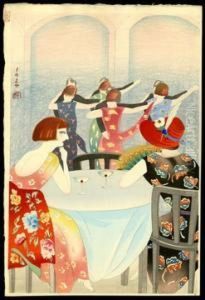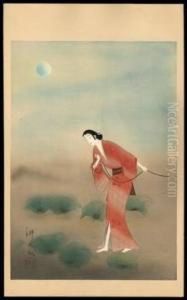Yamamura Toyonari Paintings
Yamamura Toyonari, later known as Yamamura Kōka, was a distinguished Japanese artist born in Kobe in 1885. His work is well-regarded for its significant contributions to the development of shin-hanga, a movement that revitalized traditional ukiyo-e art by integrating Western techniques and perspectives. This movement aimed to create a new form of printmaking that was both modern and deeply rooted in the rich history of Japanese art.
Toyonari initially trained in Western-style painting under the guidance of Kajita Hanko. His early career was marked by his exploration of various artistic styles, but he eventually found his true calling in the world of woodblock printmaking. In the 1910s, he began to gain recognition for his prints, which were characterized by their delicate lines and subtle use of color. His subjects often included bijin-ga (portraits of beautiful women), which were rendered with a modern sensibility and an emphasis on the individuality and emotion of the subjects.
In 1924, Toyonari was invited by the publisher Watanabe Shozaburo to join the shin-hanga movement, an invitation that marked a significant turning point in his career. Under Watanabe's guidance, he produced a series of prints that are considered some of the finest examples of the shin-hanga style. These works combined the traditional ukiyo-e practice of collaboration between artist, carver, and printer with a new emphasis on the artist's creative vision.
Despite his success in printmaking, Toyonari also continued to work in other media, including watercolor and oil painting. Throughout his career, he maintained a commitment to portraying his subjects with a sense of realism and psychological depth, setting his work apart from that of many of his contemporaries.
Yamamura Toyonari's contribution to the shin-hanga movement and Japanese art as a whole was significant. He managed to bridge the gap between the traditional and the modern, creating works that were deeply respectful of Japan's artistic heritage while also engaging with the wider movements in global art. He died in 1942, leaving behind a body of work that continues to be celebrated for its beauty and artistic integrity.






